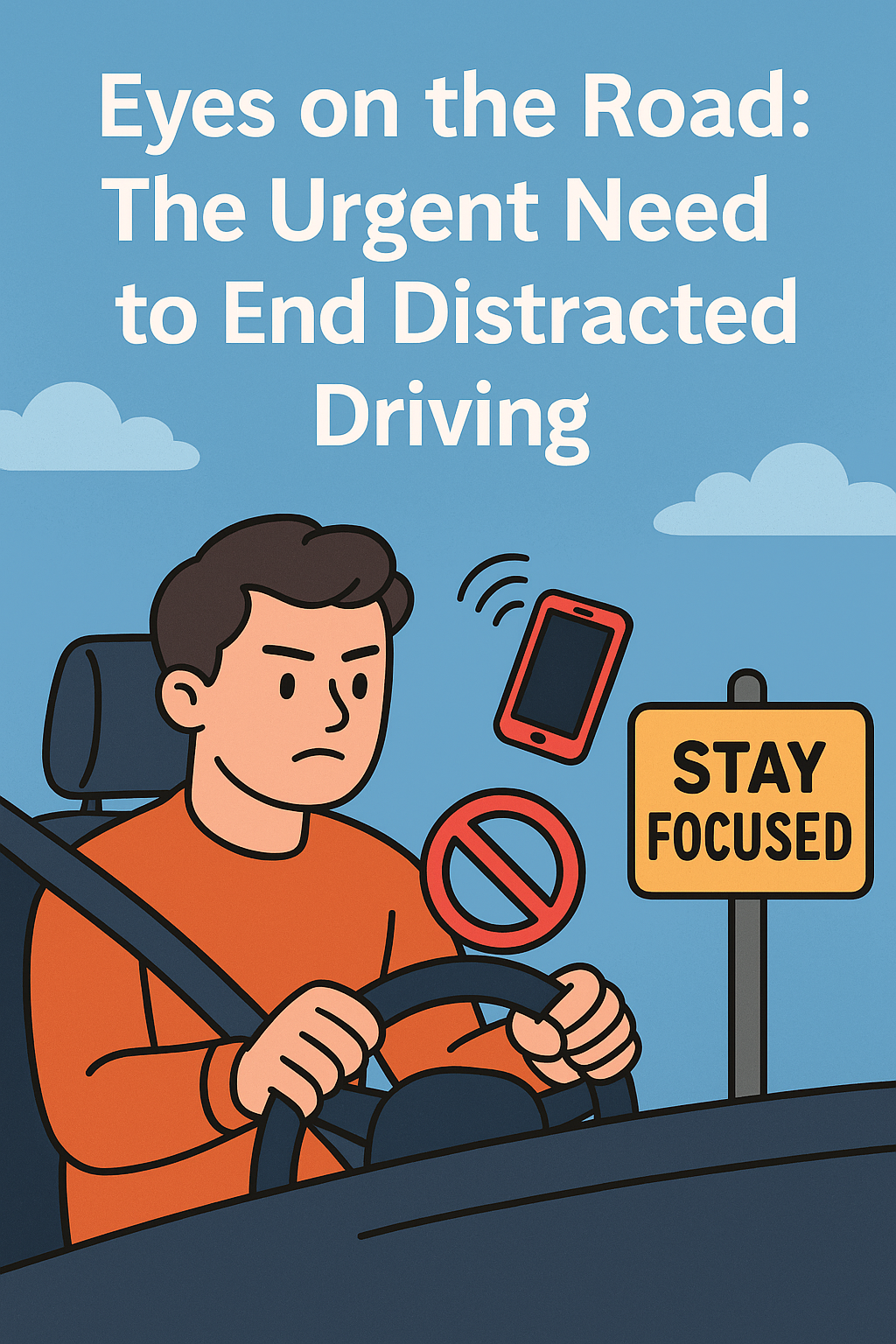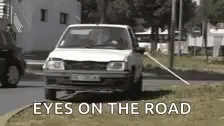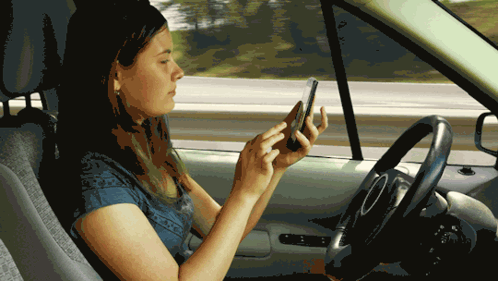🚗 Eyes on the Road: A Personal Reminder During Distracted Driving Awareness Month

Health & Sciences | The Varrock Street Journal
Good morning, readers! We live in a world that pulls at our attention every second of every day. Notifications, playlists, group chats, calendars—everything fights for our focus. But there’s one place where divided attention can turn a small moment into an irreversible tragedy: behind the wheel.
April is National Distracted Driving Awareness Month, and today, instead of just rattling off numbers, we want to pause and truly reflect on what’s at stake.

📱 The Distraction You Don't See Coming
Think about this: You look down at your phone to check a message—just for five seconds. If you're driving 55 mph, in that time, you’ve traveled the length of a football field—blind.
And you’re not alone. Every day in America, nine people lose their lives because someone took their eyes, their hands, or their mind off the road. Some of them were drivers. Some were passengers. Some were just walking across a street, trusting that someone was paying attention.
When we hear numbers like "390,000 crashes per year," it can sound like just another statistic. But every one of those crashes changes a life: a child who doesn't come home, a family that grieves a seat forever empty at their table.
👉 Learn more about distracted driving risks

🛑 It’s Not Just Texting Anymore
It’s easy to think, "Well, I don't text and drive—I’m careful." But distraction has many sneaky faces:
- Scrolling through Spotify
- Glancing at GPS
- Taking a selfie at a red light
- Answering a call on Bluetooth
- Trusting "autopilot" features a little too much
Newer cars, packed with giant touchscreens and hands-free systems, can make it feel safer—but research shows they often increase distractions, not reduce them.
Even drivers using partial automation systems like Tesla's Autopilot were found to be more likely to get distracted than drivers of regular cars. (Reuters Study)
The truth? No technology can replace full human attention.
🧠 The Invisible Cost of Distraction
You might still be holding the steering wheel. You might still be looking at the road. But when your brain is tied up with a text, a playlist, or a quick scroll, your ability to react, judge, and adjust slows down dramatically.
Brain imaging studies show that even simple phone conversations reduce critical brain activity by 37% in areas needed for spatial awareness. (Mobile Phones and Driving Safety)
When you’re distracted, you’re not really driving—you’re just aiming.
🤔 Why This Hits Home
Many of us are lucky: We've glanced at a text, changed a playlist, or checked a map—and nothing bad happened. But what if it had?
The most heartbreaking part of distracted driving is that it’s so preventable. No one wakes up planning to cause a crash. It's just a second here, a glance there... until it's not.
When we drive, we’re responsible not just for ourselves, but for everyone around us—the family in the minivan, the cyclist in the bike lane, the kid waiting to cross the street. We owe them our full attention.
🛡️ How We Change This
It starts with one small promise: When I'm driving, I’m driving.
- Silence the phone.
- Set the playlist before leaving.
- Pull over if something urgent comes up.
- Talk openly with friends and family about distraction risks.
- Lead by example, especially for young drivers who are watching.
We can’t undo crashes that already happened. But we can prevent the next one.
Here is a podcast by the New York Times discussing this topic!
🧠 Reflection Questions
- When was the last time you let yourself get distracted behind the wheel?
- How can we create a culture where staying fully present while driving is the norm, not the exception?
- What personal promise will you make to protect yourself and others on the road?
📚 References
National Highway Traffic Safety Administration. (2024). Distracted Driving Dangers and Statistics. https://www.nhtsa.gov/risky-driving/distracted-driving
Centers for Disease Control and Prevention. (2024). Distracted Driving Overview. https://www.cdc.gov/distracted-driving/about/index.html
Pew Research Center. (2024). Cellphone Distraction Seen as Major Road Danger. https://www.pewresearch.org/short-reads/2024/11/12/many-americans-perceive-a-rise-in-dangerous-driving-78-see-cellphone-distraction-as-major-problem/
Reuters. (2024). Drivers More Likely to Be Distracted Using Automation Tech. https://www.reuters.com/business/autos-transportation/drivers-more-likely-be-distracted-while-using-partial-automation-tech-study-2024-09-17/
👋 Final Thoughts
This April, let’s make it about more than awareness. Let’s make it about action. When you're behind the wheel, your focus could save a life—including your own.
📲 Stay safe, stay focused:
- Instagram: @thevarrockstreetjournal
- TikTok: @varrock.street.jo
